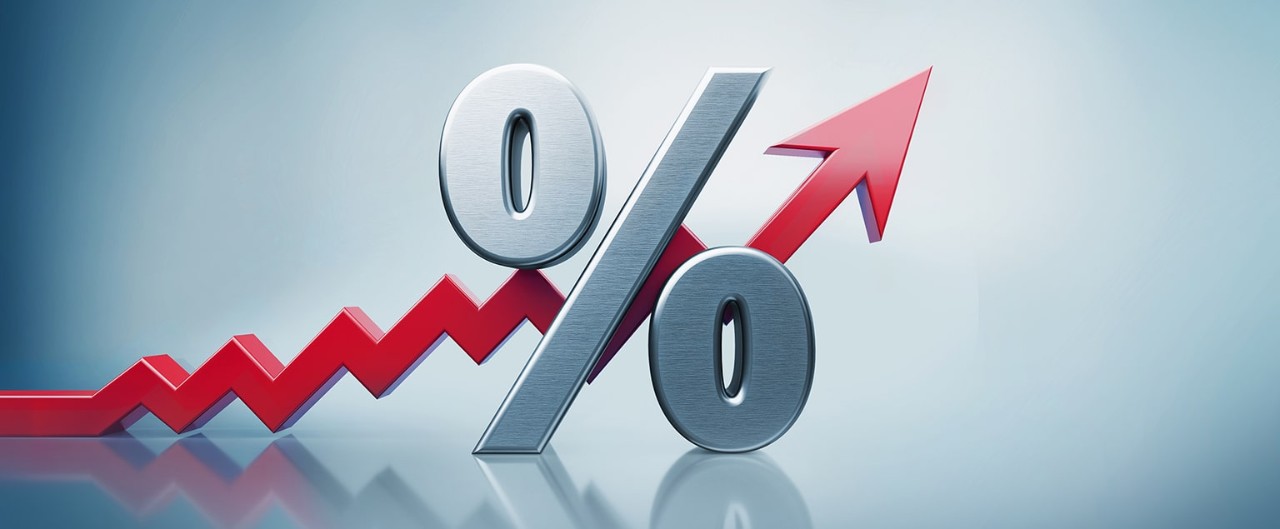

Why are interest rates rising?
At the time of this writing, we're approaching a time of inflation and interest rate increases that we haven't seen in decades.
Change that occurs at such a high rate can lead to a feeling of confusion and uncertainty. At First Financial Bank, we're here to help make some sense of these dramatic changes in the economy.
Let's first dive into the details of interest rates. An interest rate is the cost of borrowing money from a lender. Moreso, it is the price that the lender charges over and above the principal amount to the borrower.
What determines an interest rate is the level of risk within each borrower when it comes time to pay back the amount borrowed.
Imagine you are lending thousands of dollars to a borrower with a limited or poor credit history. You may feel that this is risky because the borrower doesn’t have a history showing they will pay back the loan.
This person would have a higher interest rate than a lower-risk borrower. Interest rates are affected by many outside forces too including supply and demand, economic policies, and inflation. Read on in this blog to find out what influences interest rates and what makes them go up or down.
Why Interest Rates Are Volatile
Interest rates respond and change due to economic growth, fiscal, and monetary policy.
Let’s consider the biggest factor that influences interest rates - the availability of funds and the cost of funds for the bank. As the cost of funds increases, lenders will need to raise interest rates to compensate.
Another thing lenders need to consider is inflation. When inflation is high, the government raises rates to deter borrowers from taking loans in an effort to reduce spending. The current price of goods might skyrocket by the time the borrower pays it back. This will reduce the lender’s purchasing power.
When the demand for credit is high, so are interest rates. Alternatively, when the demand for credit is low, interest rates will decrease. When the available amount of credit is high, this lowers interest rates. When the supply of credit is low, interest rates will increase.
Consumers have a lot of purchasing power when interest rates are low. This translates into increased spending that stimulates the economy. High-interest rates lead people to reduce their spending. This often results in an economic downturn.
What Drives Up Interest Rates?
The Federal Reserve will increase or decrease interest rates in response to changes in economic conditions.
Inflation is the change in the cost of goods over time. The fed keeps its eye on the Consumer Price Index (CPI) and Producer Price Index (PPI) with the intent to keep levels between 2 to 3%. The Federal Reserve tries to prevent inflation since it reduces purchasing power. Lenders will then increase interest rates to compensate.
When the CPI and PPI rise above this rate, the fed increases the federal funds rate. The federal funds rate is the interest rate at which banks lend each other money. The federal funds rate influences the Prime Rate. When the Prime Rate is high, borrowing money is more expensive. This causes increased interest rates and lower spending. This also effectively lowers inflation.
This is why the Federal Reserve raised interest rates in 2022, to fight rising inflation.
How Policies Affect Interest Rates
Fiscal policies and government spending also have a profound effect on interest rates. When the economy is growing, companies often have an increased need to borrow money so that they can expand.
The Federal Reserve can also control the money supply and inflation by printing more money. Printing money stimulates the economy, but can also cause increased inflation. The increased money supply artificially lowers interest rates. If the amount of money is reduced for example, by mass withdrawals from banks, this reduced supply of money will drive up interest rates.
When interest rates are low, consumers are incentivized to borrow money to make big purchases. This increases demand but doesn’t increase the supply of houses, for example. When demand is high and supply is low, housing costs increase. When many consumers are trying to buy a limited supply of houses, inflation can increase.
Conclusion
Interest rates have far-reaching effects on stocks, bonds, and consumer behavior. The volatility of interest rates can cause consumers to behave a certain way. This can have ripple effects on the economy.
Sometimes consumer behavior alters the behavior of the market. A market with strong consumer spending can be at risk of increased inflation.
Consumer behavior is a driving force behind any economic performance, inflation, and interest rates.
The stock market is also not immune to rate increases. When interest rates increase, this negatively affects the performance of stocks. This reduces the need to incur the risk of investing and lowers the demand for stocks.
While interest rates affect the stock market right away, most of the economy will not see these effects until about a year after the interest rates have changed.
As you can see, the economy is an interconnected world of consumer behavior and economic factors. Many of these factors are out of your control. What you can control is how you manage your personal financial health. You have the support of thousands of First Financial Bank representatives, across many services, to help you.